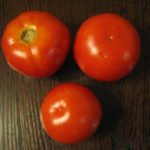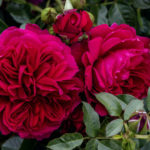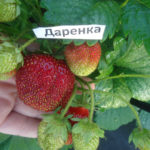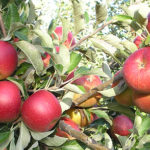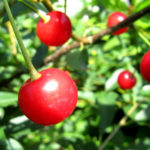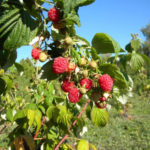Cherry variety Zagorievskaya
Not every cherry variety is listed in the State Register of Plants of the Russian Federation. But among these there are also worthy, deserving attention. For example, Zagoryevskaya. It was created at the All-Russian Institute of Selection and Technology of Horticulture and Nursery. The parental forms were Lyubskaya and Consumer goods black. The culture is great for growing in the northwestern part of Russia, including the Moscow region.
Description
The plant belongs to bushy, has a small size - 2.5 - 3 meters. The crown is spreading, wide, often rounded, not too thick. The bark is cherry brown, with grayish horizontal lenticels. Young shoots are greenish. The leaf blade is ordinary, with a serrated edge. Blooms in late May. Fruiting of cherries occurs on annual shoots.
The berries are round, large, weighing on average up to 4 grams. Outwardly, they look very appetizing and resemble cherries. The skin is smooth, glossy, tinged with a dark red color; in the period of full ripeness it can acquire a brownish tint. The pulp is quite dense, but tender, ocher color, juicy. The taste can be called dessert, sweet and sour, with a chocolate flavor. Assessment of tasters - 4.5 points. The juice has an ocher hue, thick in consistency. This feature assigns Zagor'evskaya to the type of morel. The peduncle is long, it is separated from the drupe with some effort. Semi-dry separation. The stone is small, easily separated from the pulp.
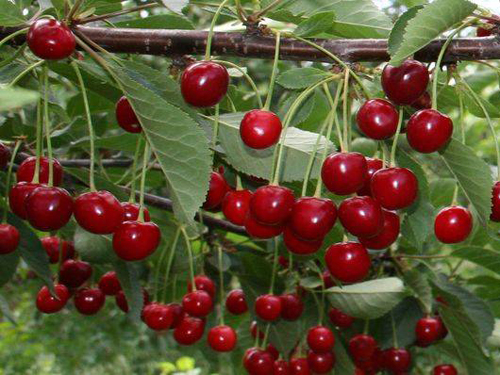
Variety characteristics
- In the period of fruiting, it begins 3 - 4 years after planting, which fits into the standard time frame;
- the harvest ripens in late July or early August, the weather has a great influence on the ripening period;
- up to 14 kg of ripe cherries can be harvested from one tree. On average, 10 to 14 centners of berries are harvested per hectare of area;
- ripe fruits do not crumble, which greatly facilitates the harvesting process;
- Zagoryevskaya is distinguished by high cold resistance in the region of cultivation. But after very frosty winters, freezing of flower buds may occur, which will affect the yield;
- there is a good resistance of cherries to periods of drought;
- to diseases of a fungal nature (coccomycosis and moniliosis), the variety is moderately resistant;
- dense pulp allows transportation over long distances;
- excellent taste makes the berries a wonderful dessert, so the main way of using them is in their natural form. But also from the harvest you can successfully prepare jam, jam, jam, liqueur, cook compote.
Pollinators
Unlike many varieties, Zagoryevskaya is a self-fertile crop, which allows it to set berries without cross-pollination. But the presence of cherries nearby Lyubskaya, Youth or Vladimirskaya will favorably affect the quality of fruits and their quantity.
Planting and leaving
In regions favorable for cultivation, planting is carried out in early spring, before the start of sap flow. The site should be chosen sunny so that the berries are sweeter. The soil should be light and fertile. The groundwater level should not lie closer than 1.5 m to the surface. Pruning for bushy forms is required. In areas with severe winters, it is necessary to insulate the root zone and stems, especially for young plants. Do not neglect preventive treatment for diseases and pests.
Cherry attracts with large-fruited, stable fruiting, universal use of berries. Harvesting from a small tree is very convenient. The self-fertility of Zagoryevskaya will save space in the garden. Among the disadvantages of the variety are freezing of flower buds during recurrent frosts and an average resistance to diseases.
